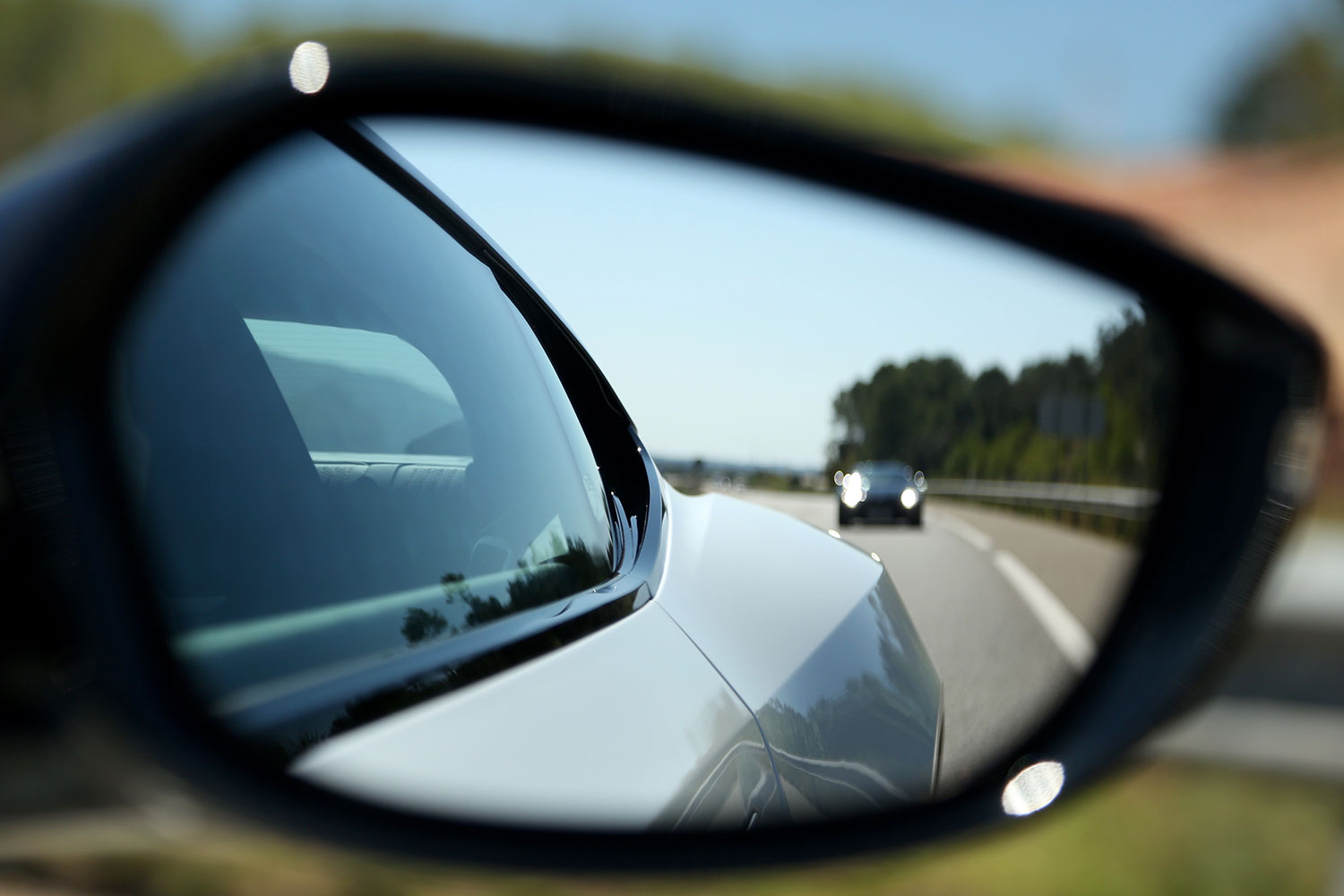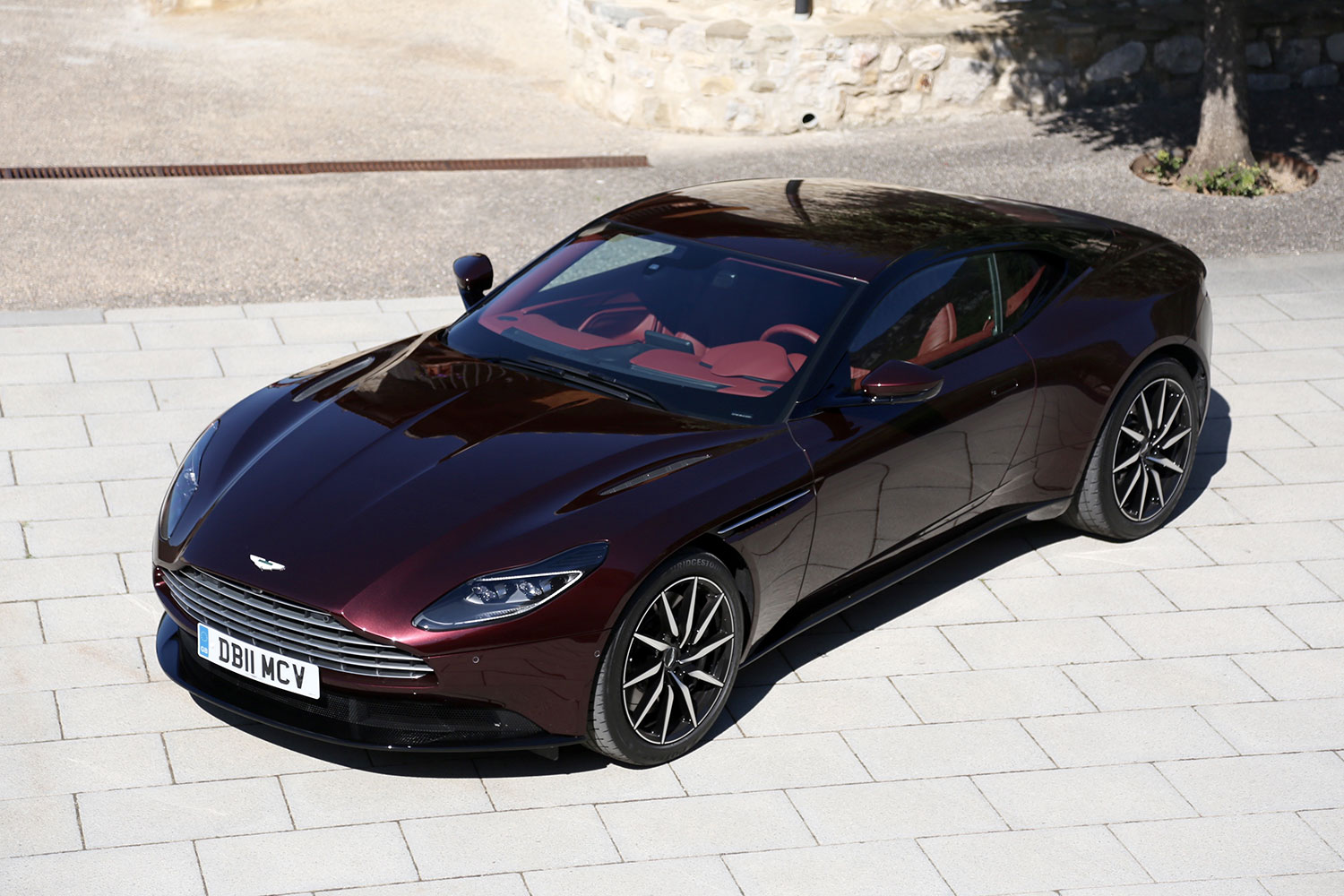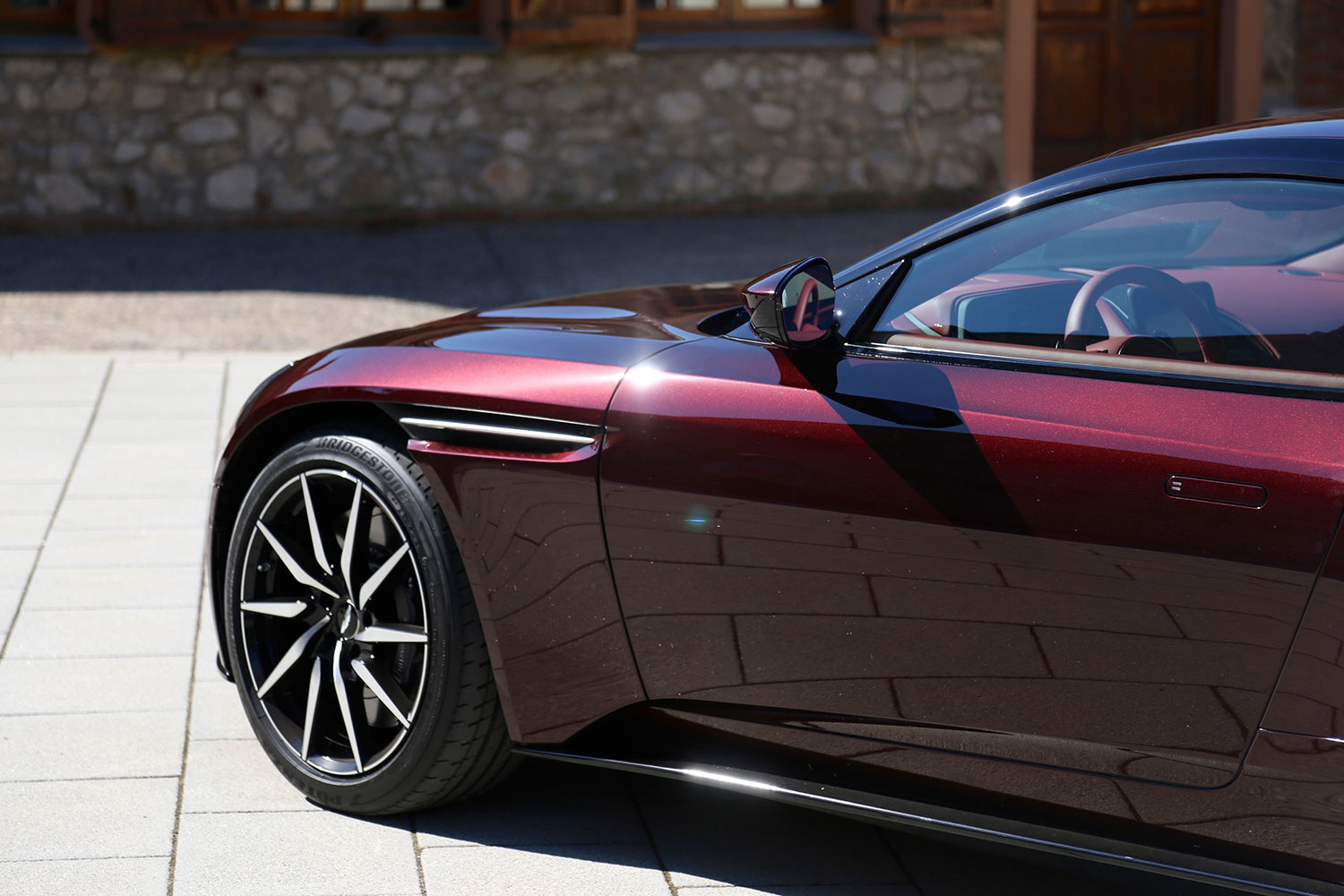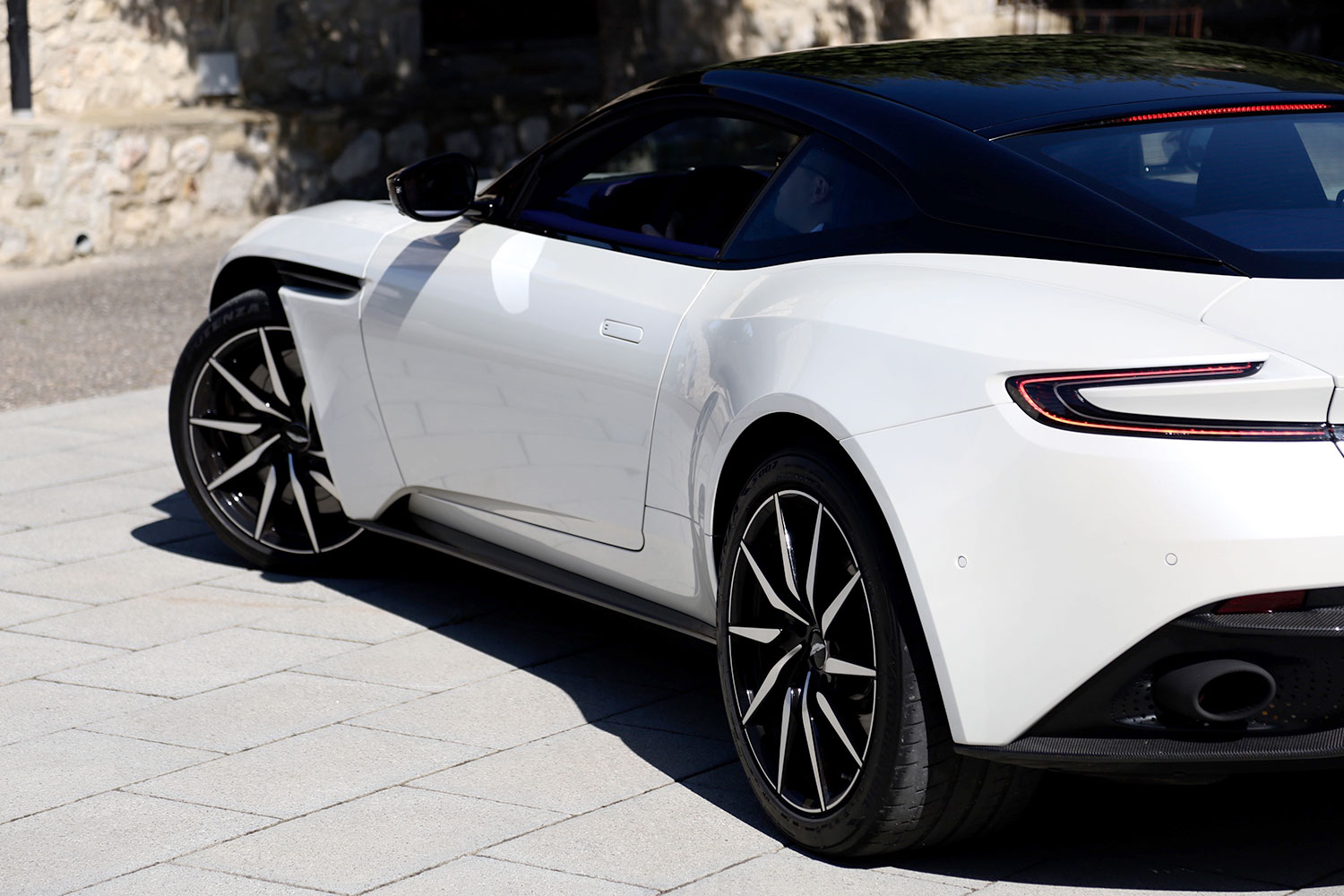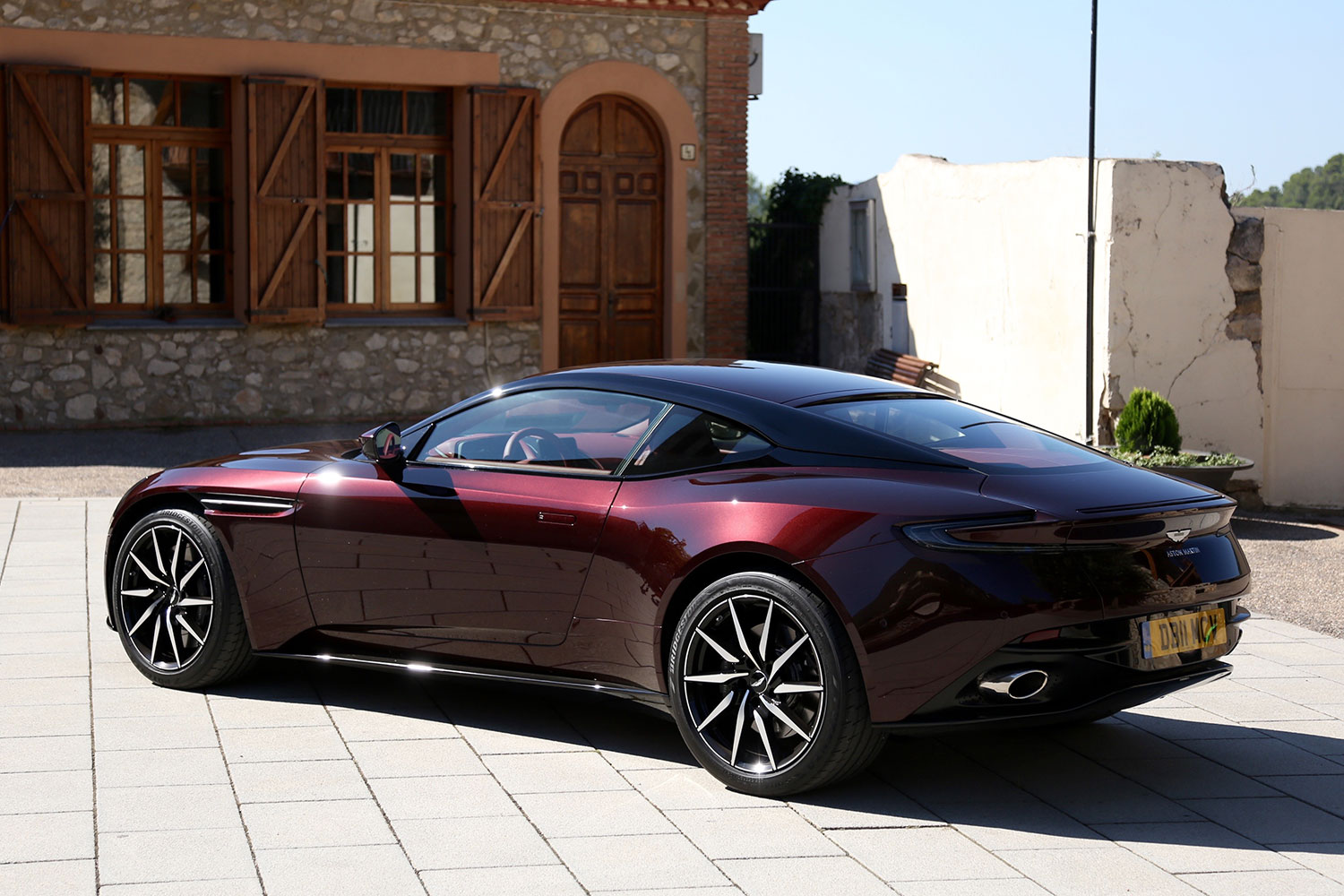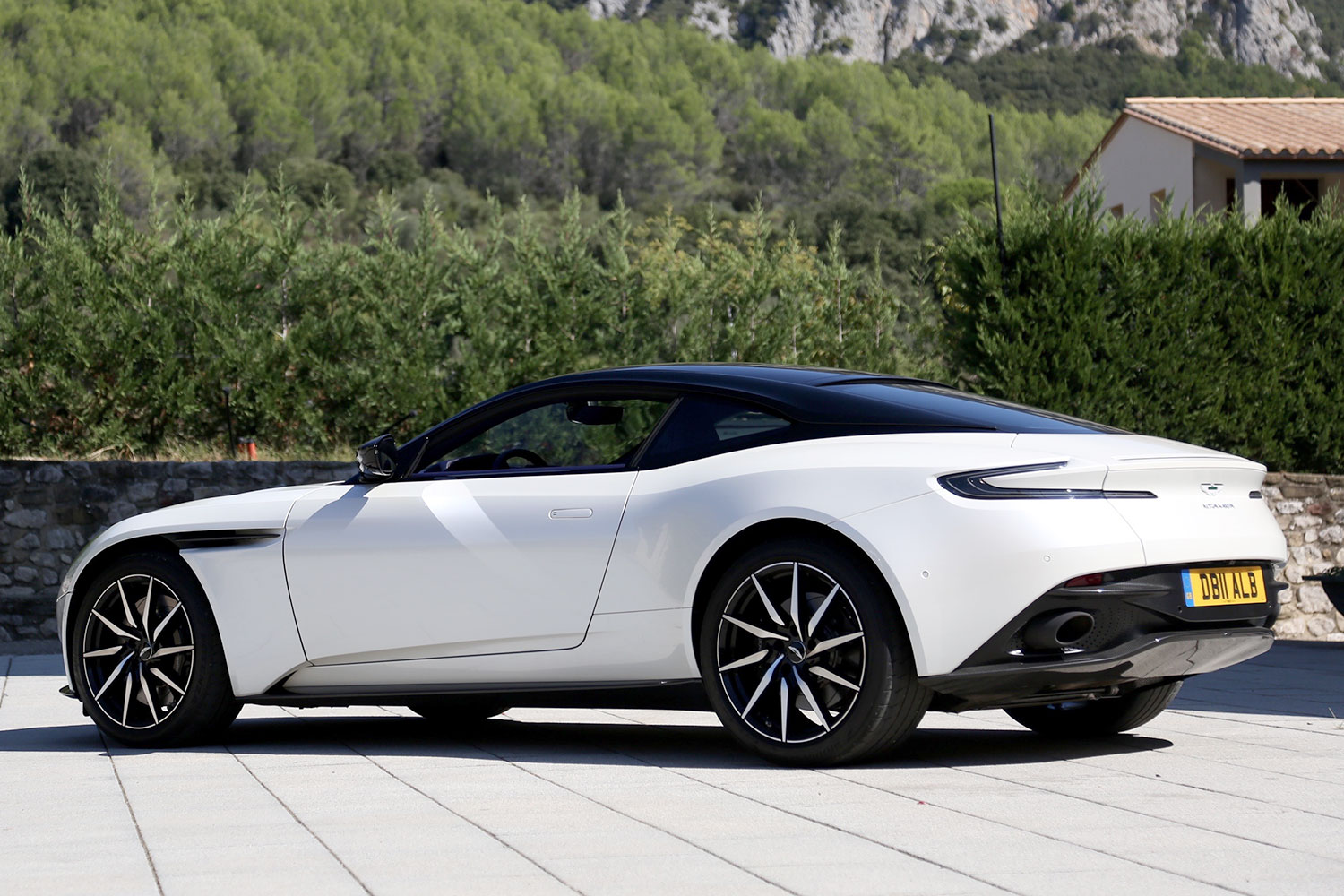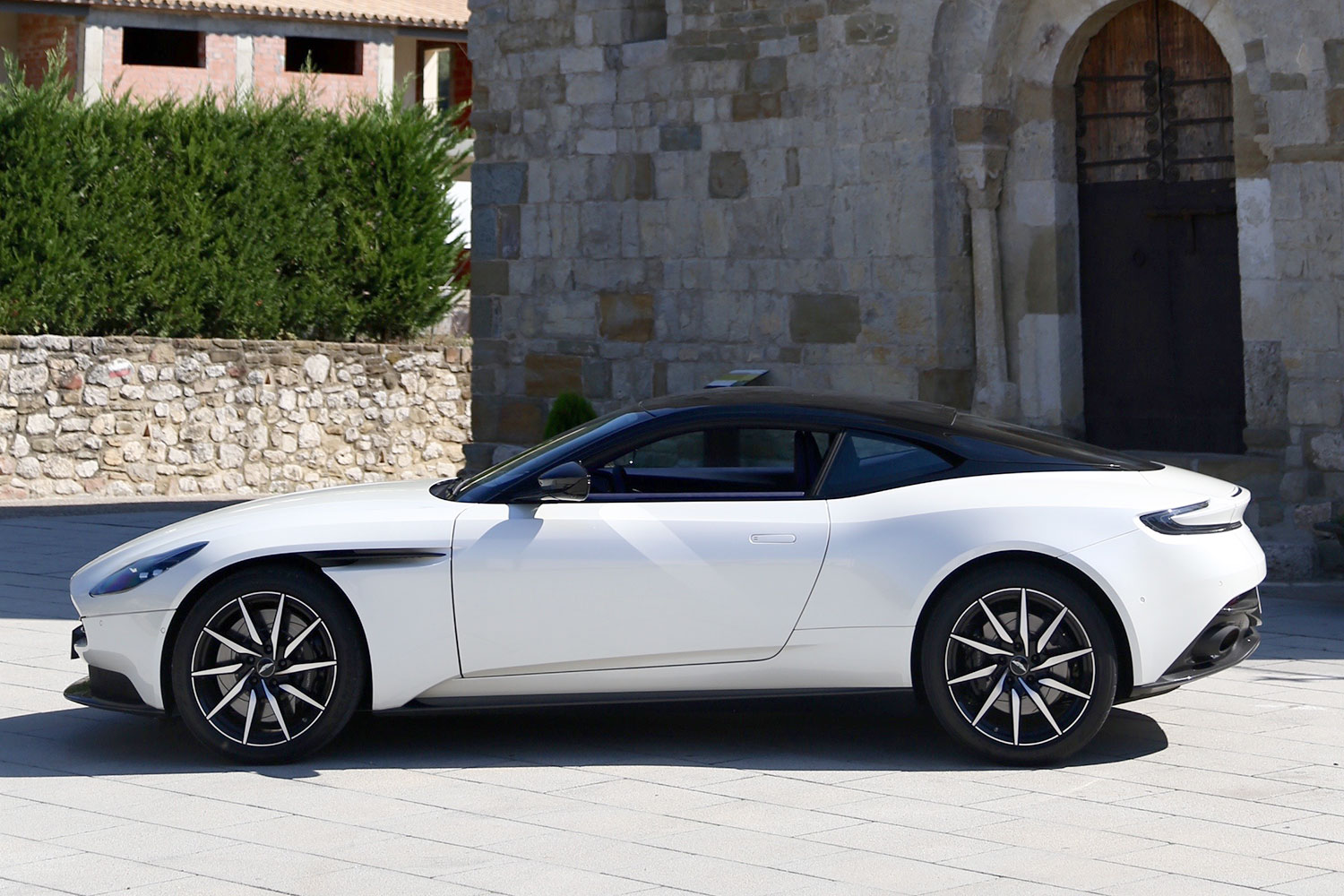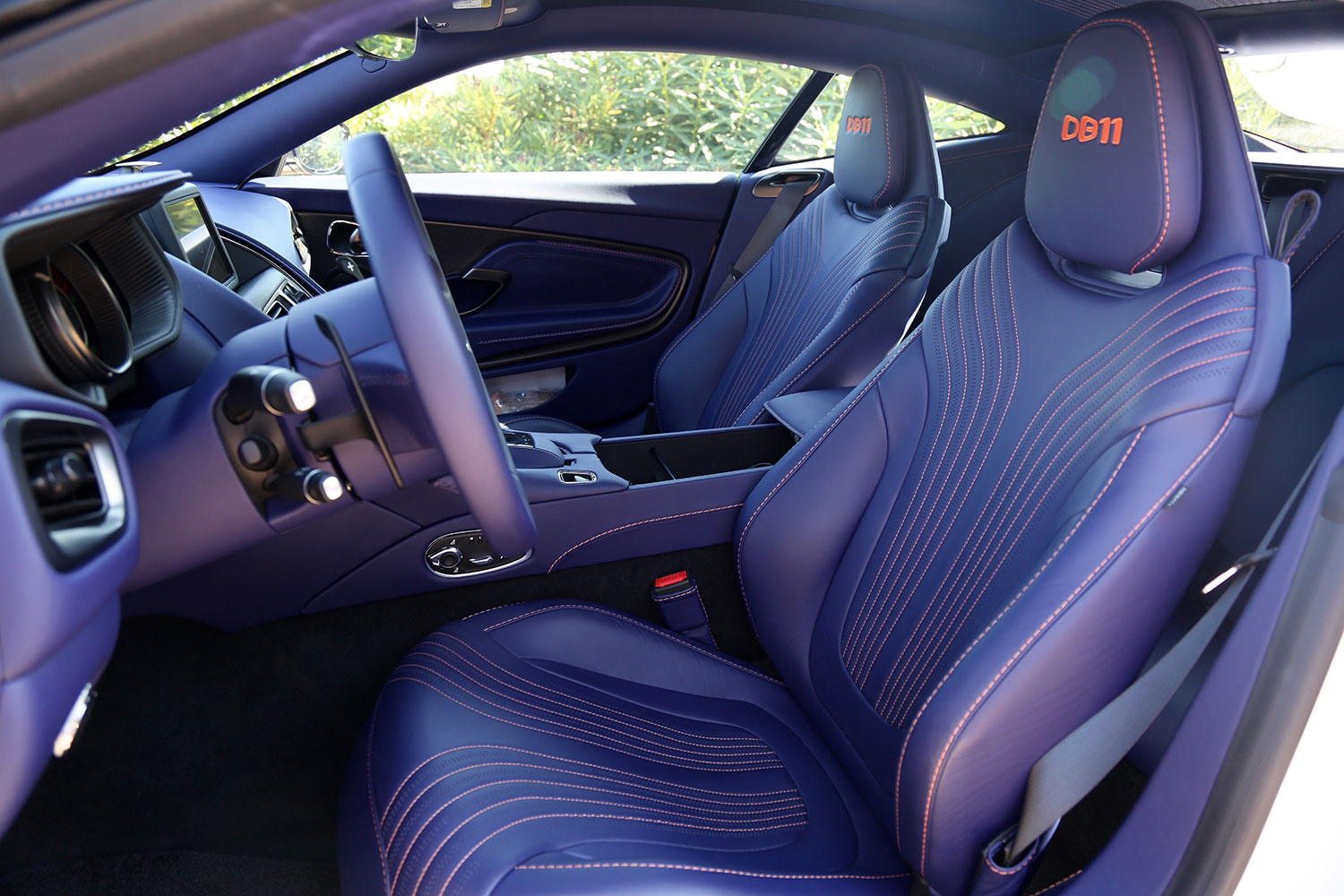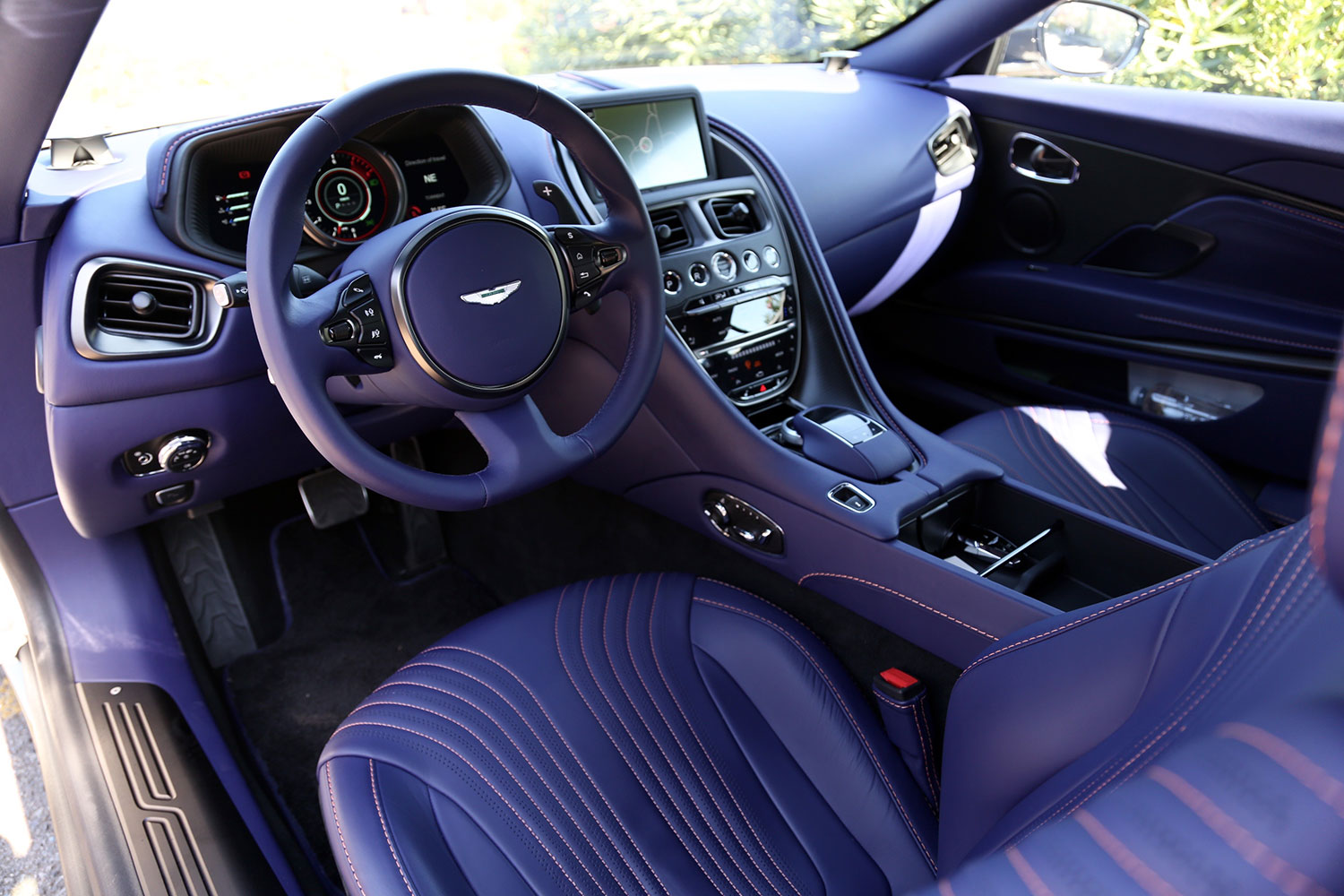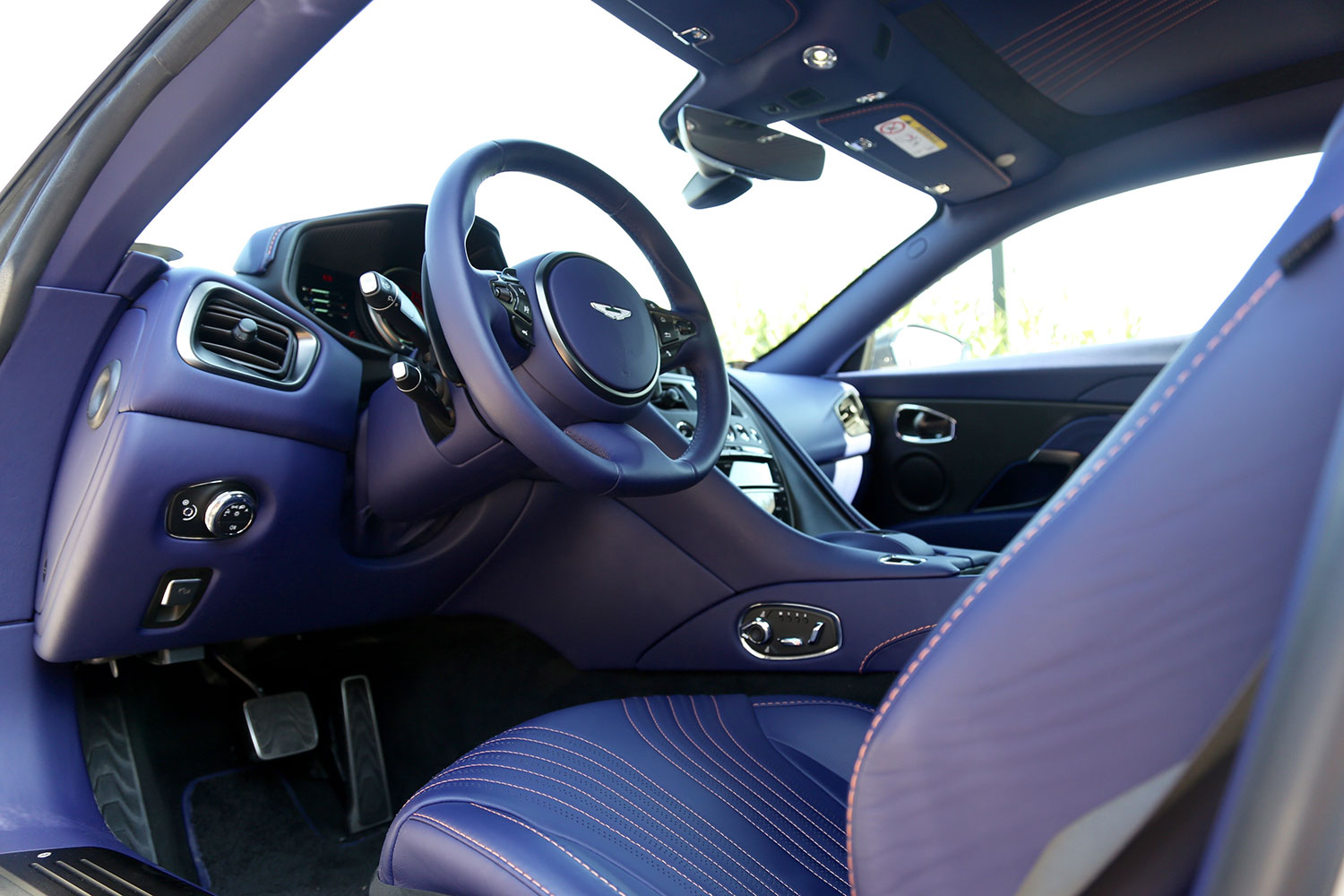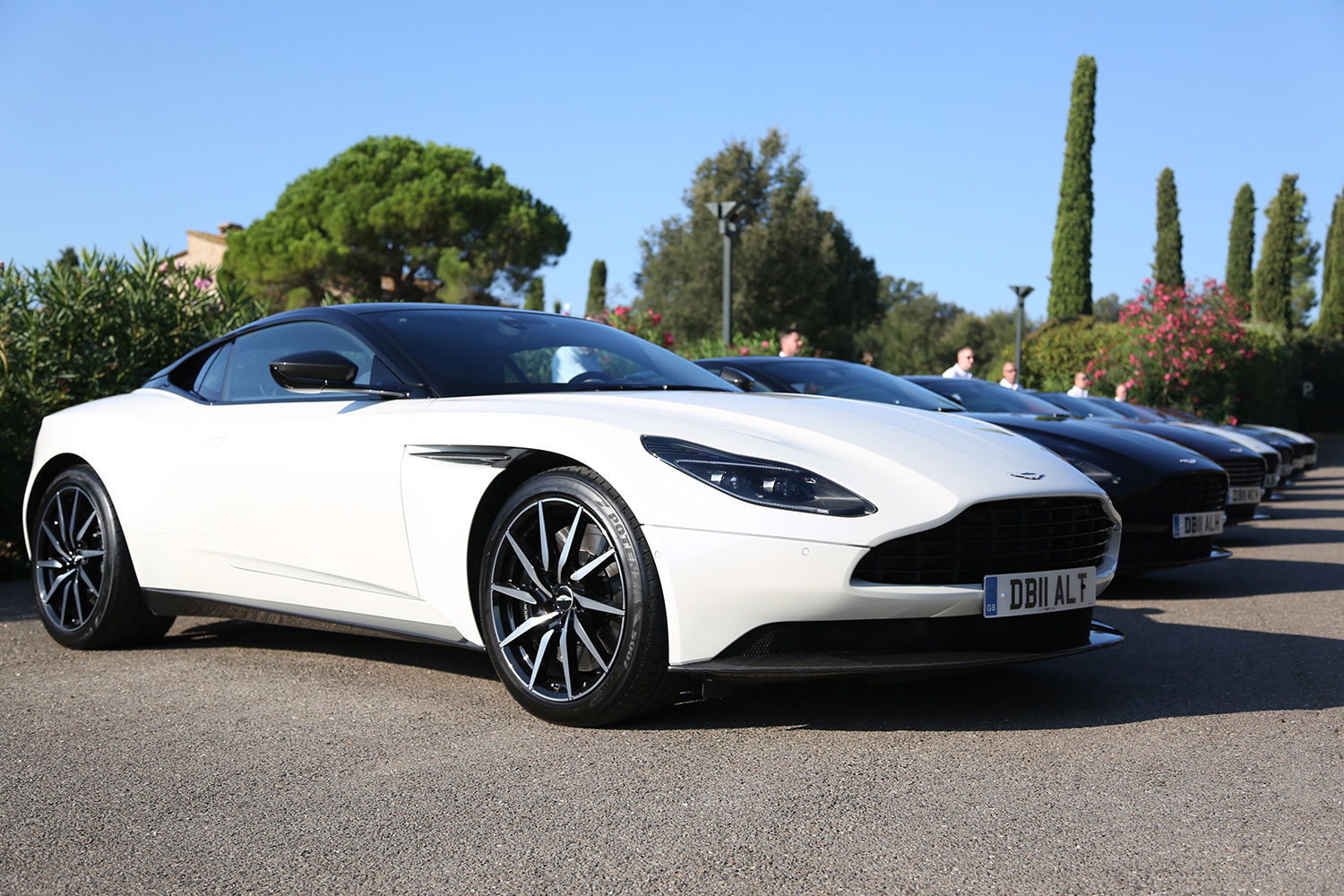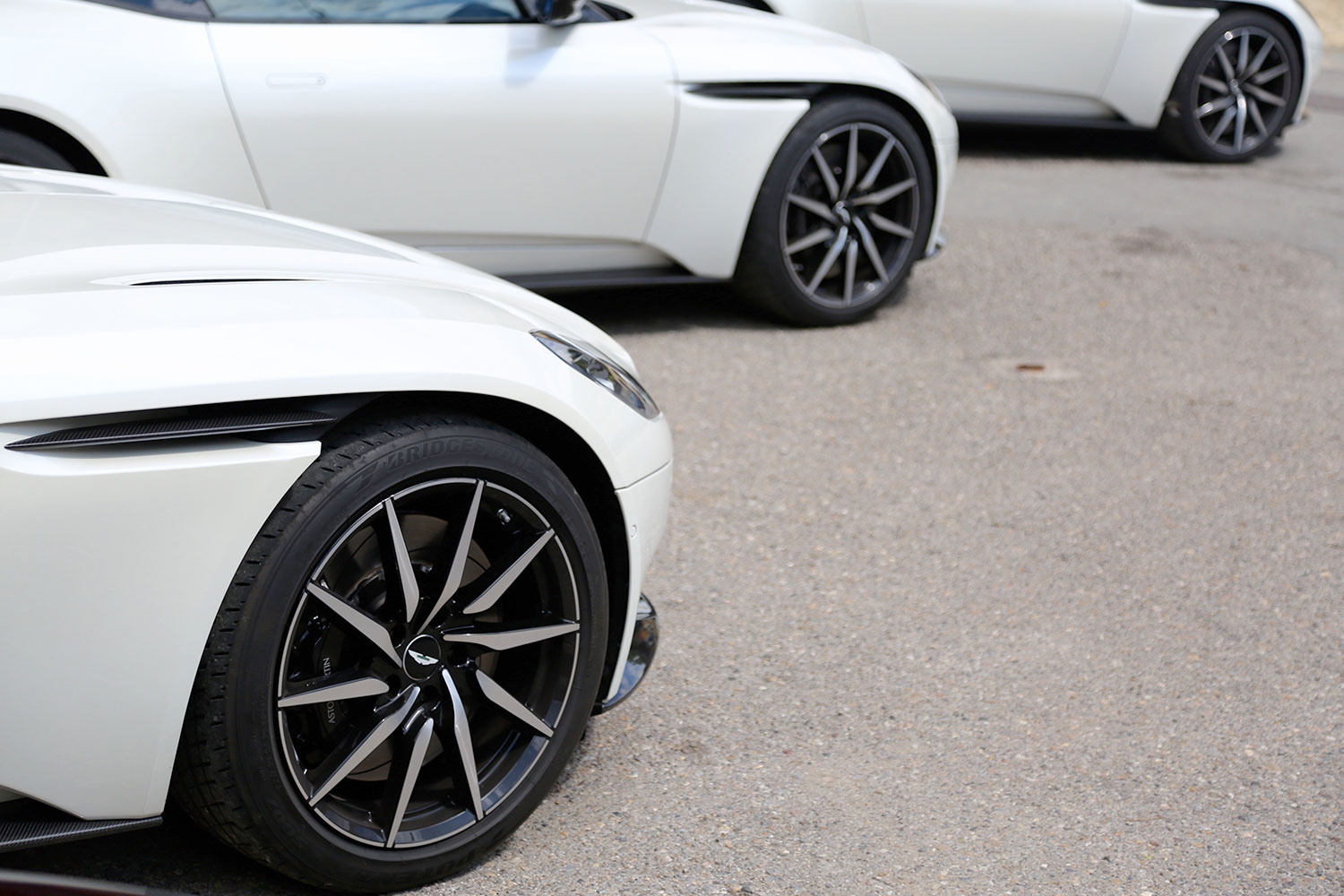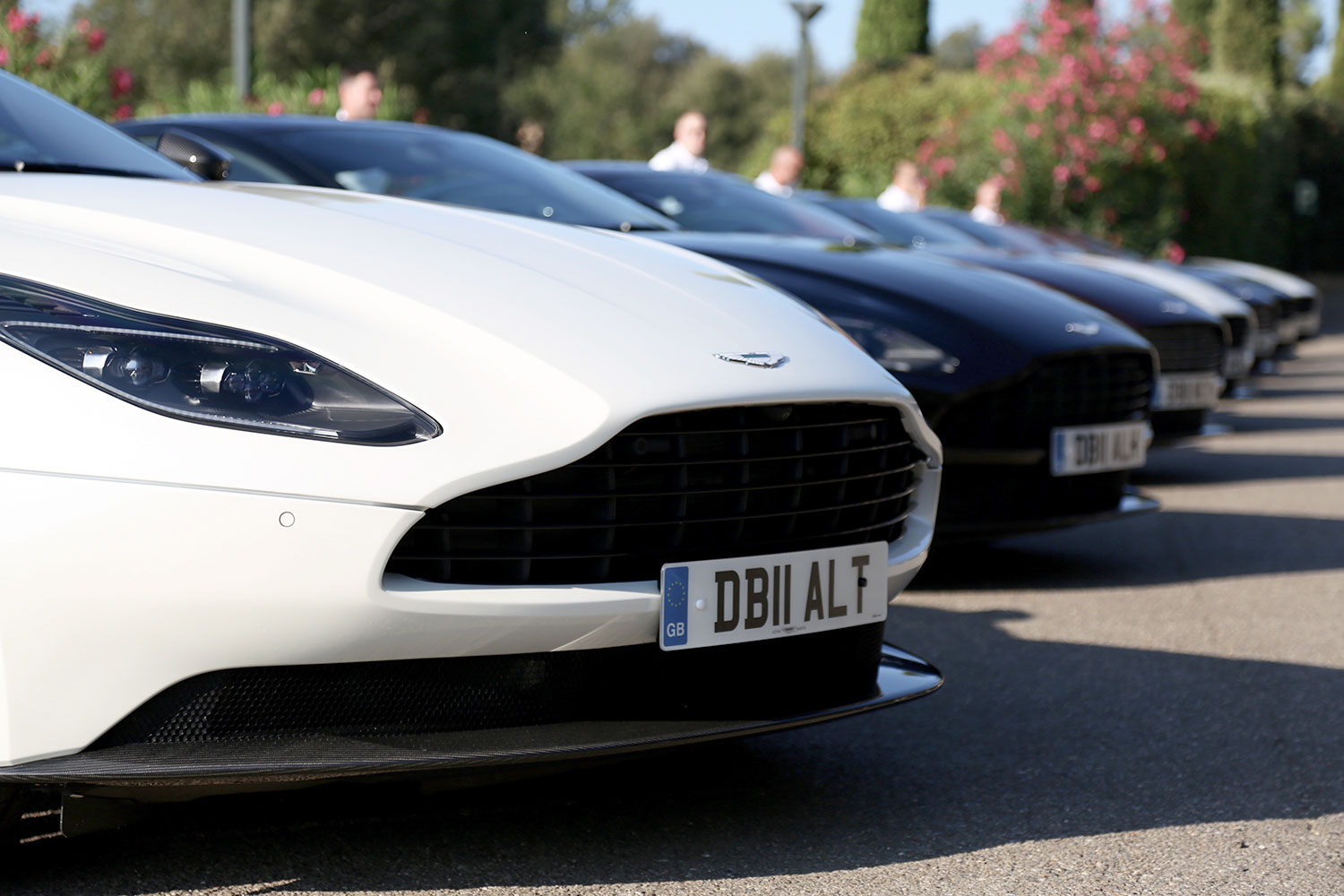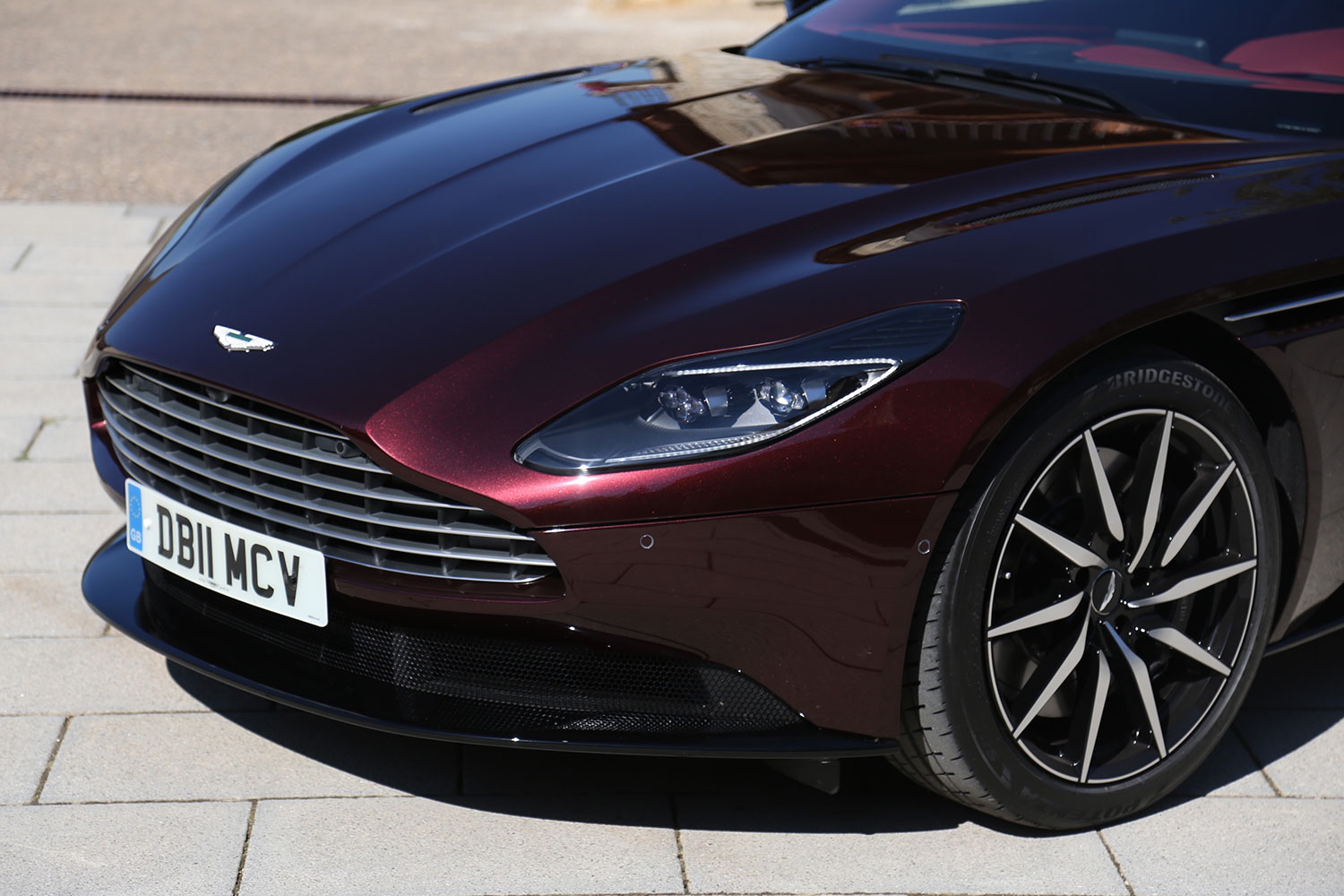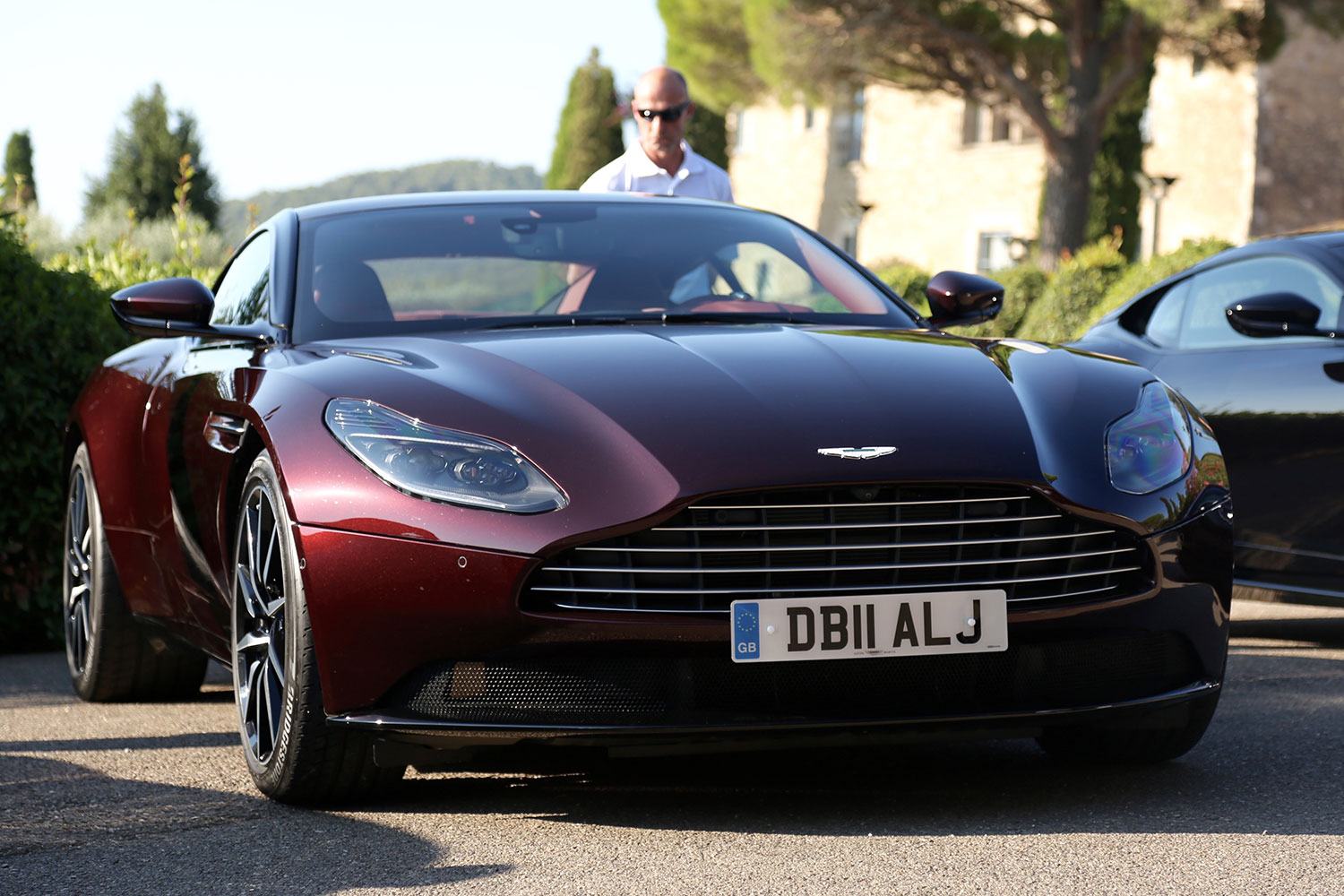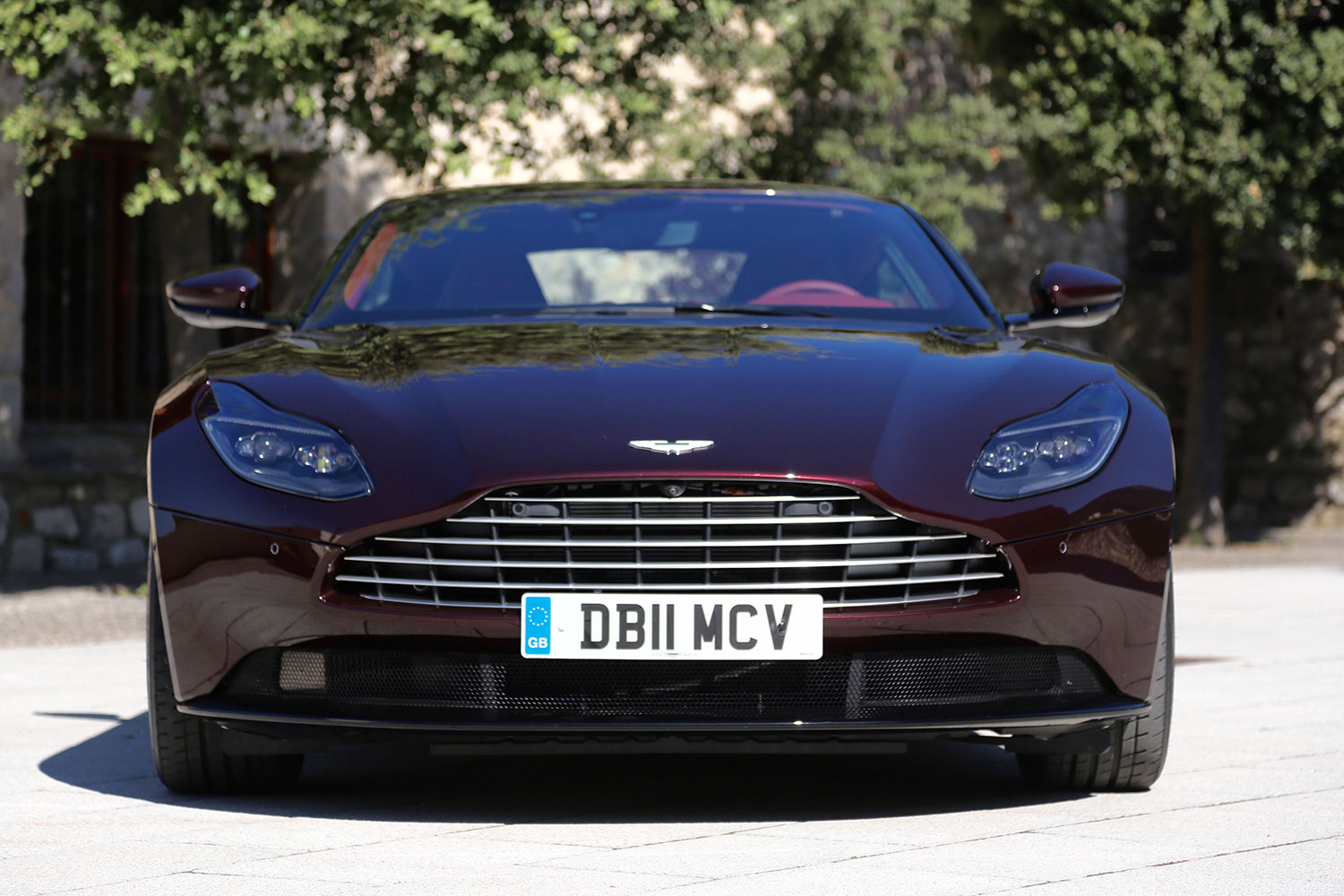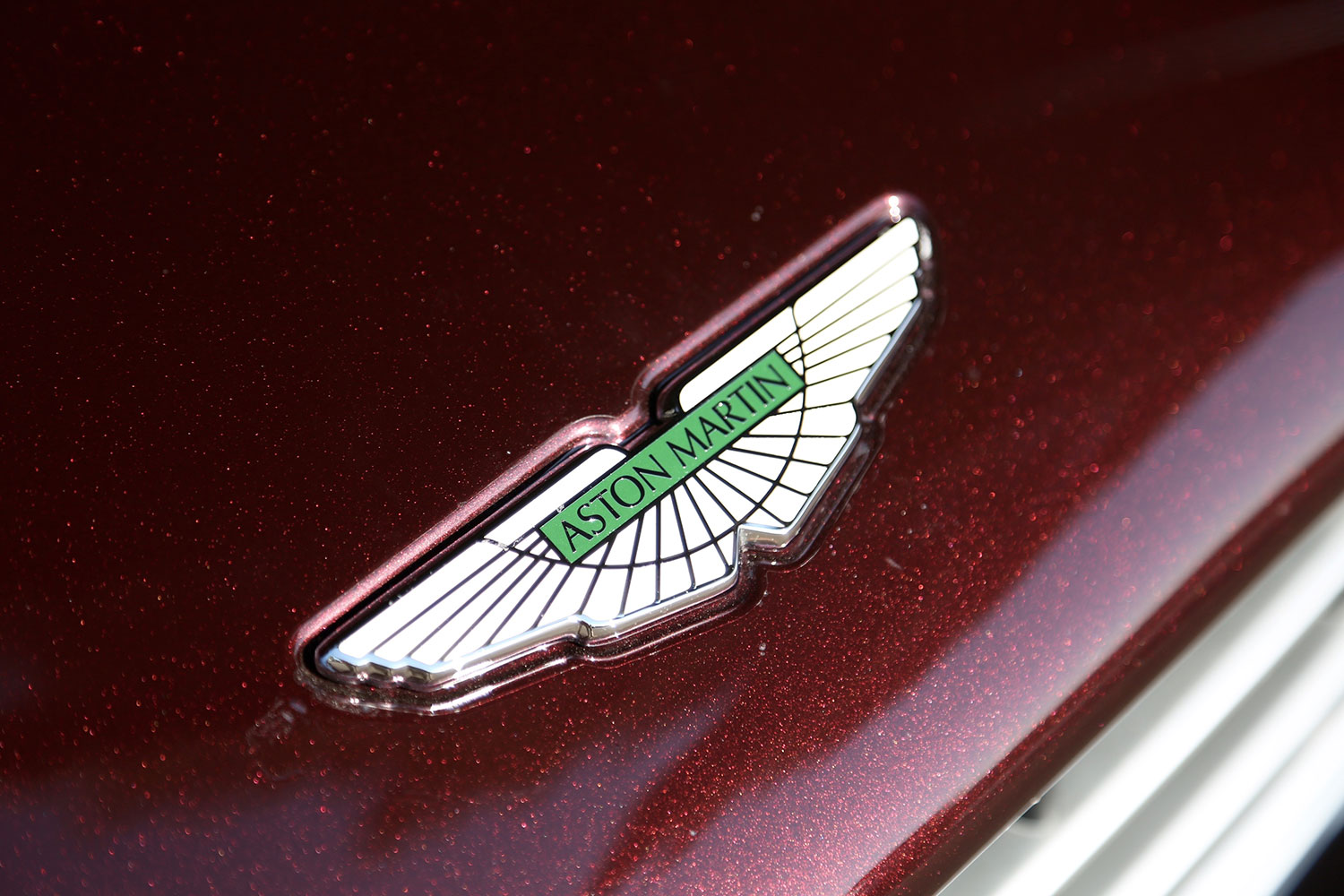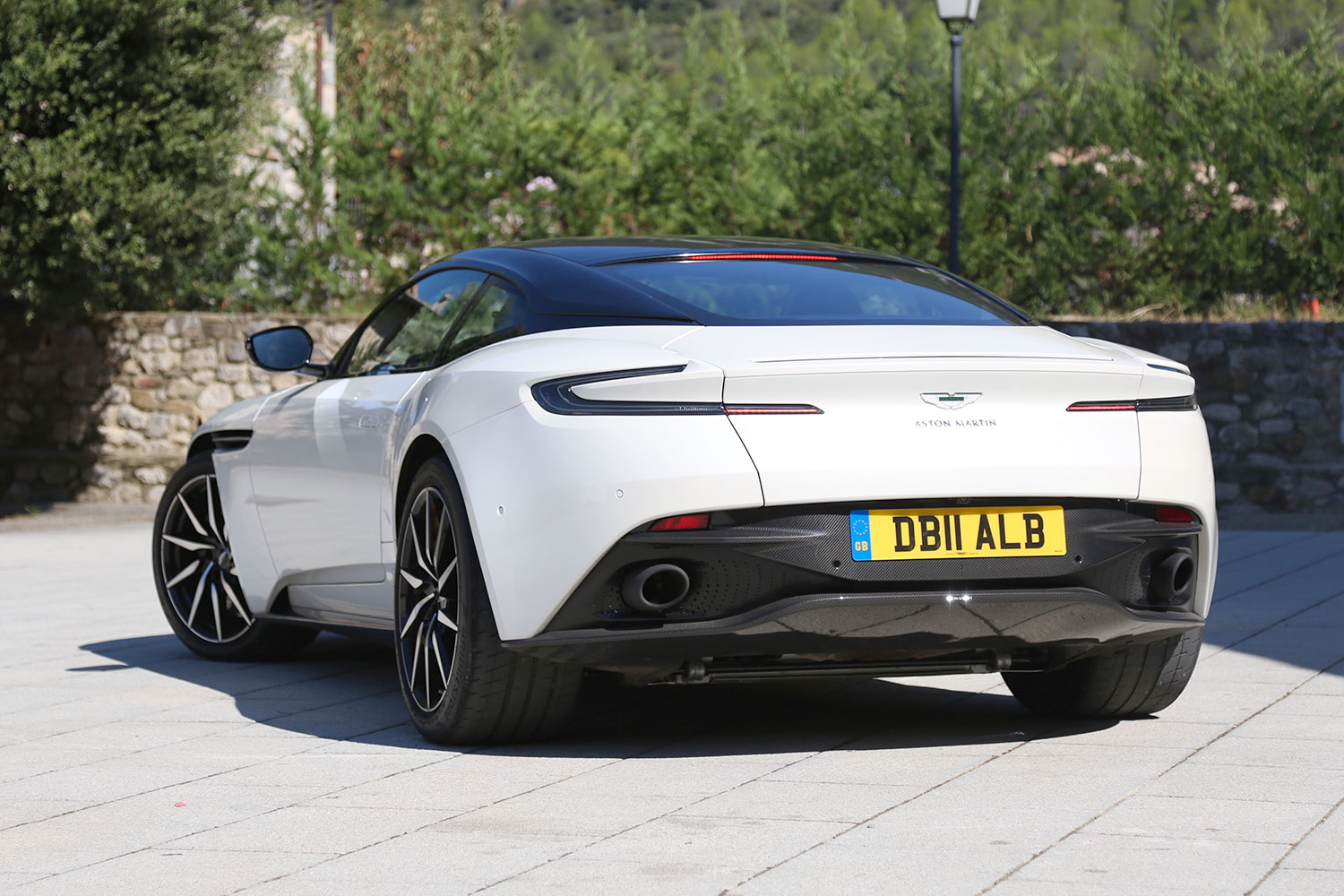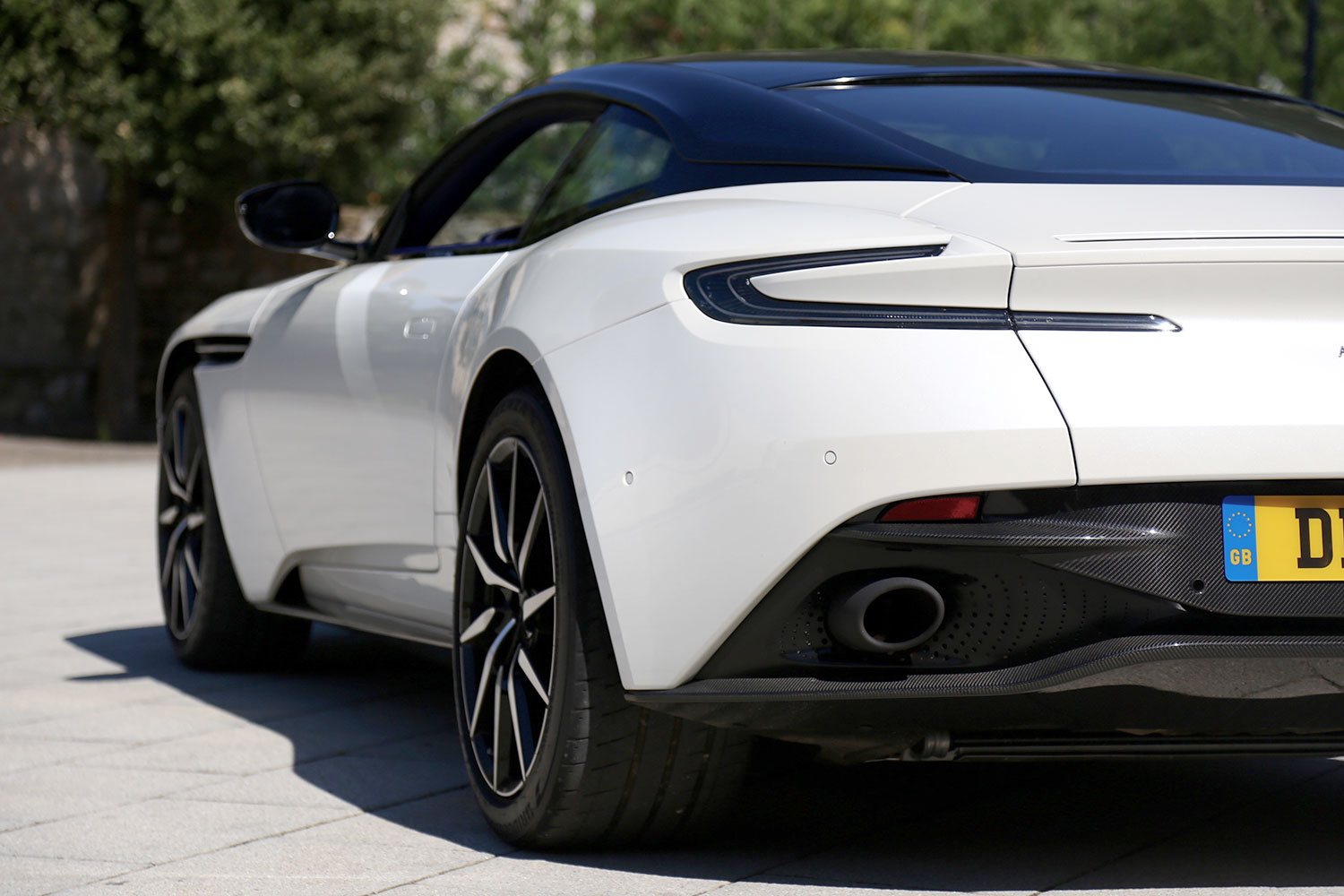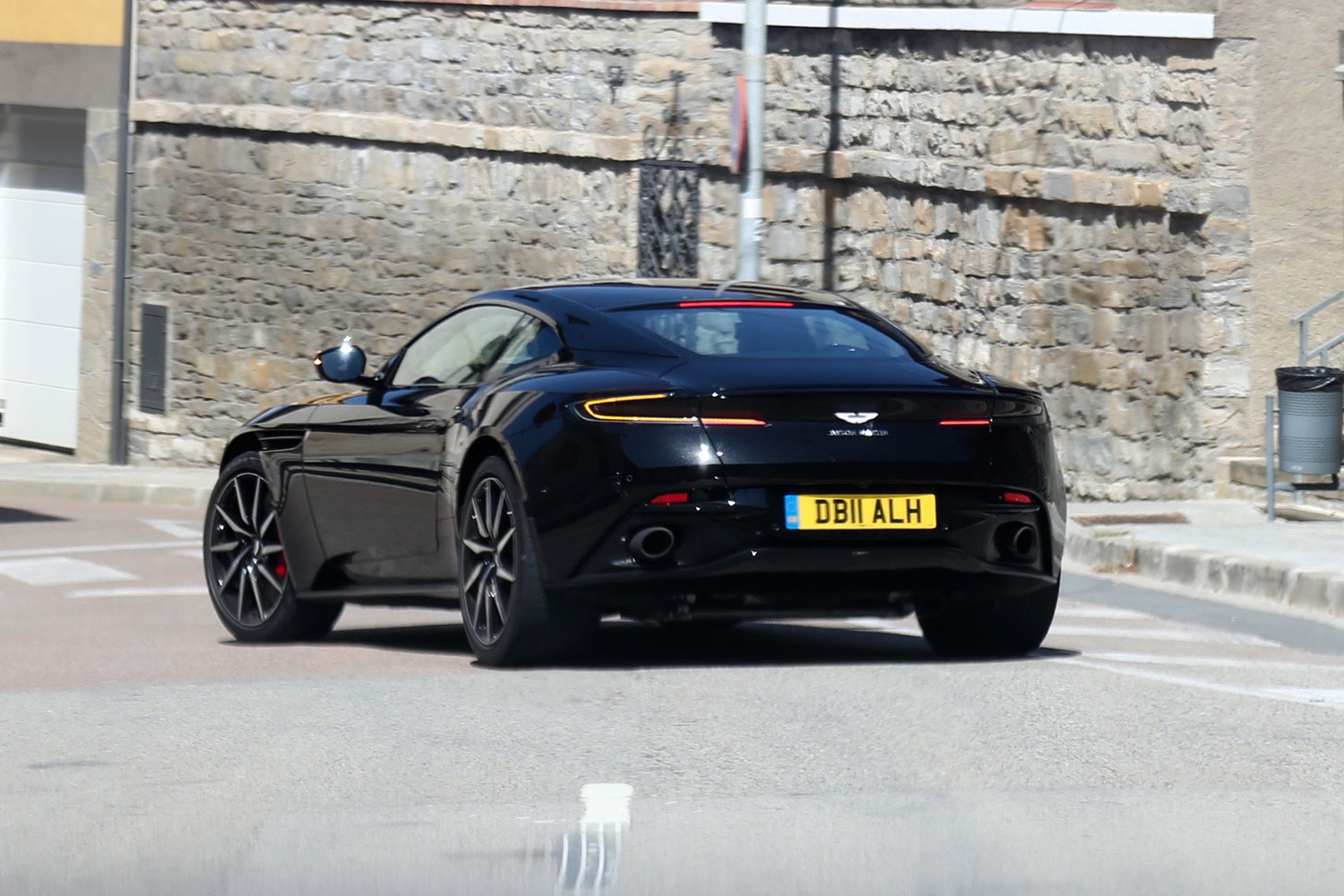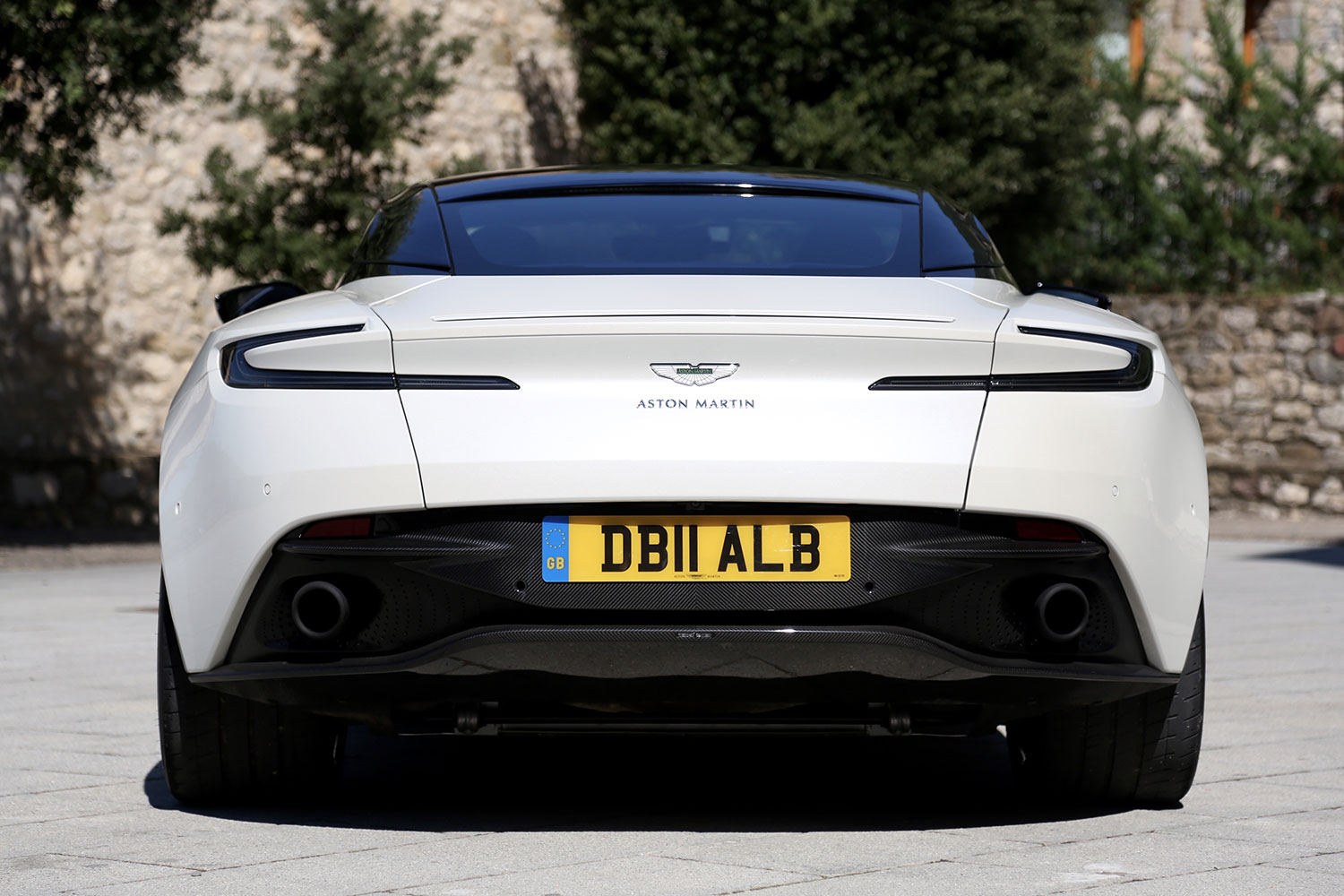The powder blue sky above Catalonia, Spain, is nearly as permanent a fixture as the 12th-century castles scattered throughout the region. Whichever speech pathologist envisioned downpour on Spanish flatlands had quite the imagination.
Related:
This marks my third visit to the land of football, tapas, and — as I’d discover — goblet-sized gin and tonics. Like each sojourn before, the weather report threatens rainfall, yet all I see upon arrival is a familiar, unmarred atmosphere. This is either a divine prank or Spain’s cloud formations that have mastered Houdini’s disappearing act.
Burgeoning curiosity would compel further investigation if not for the distracting and beautiful silhouette decorating the driveway at Mas de Torrent Hotel & Spa. Leave it to the Aston Martin DB11 to derail all train of thought.

Our second look at this striking GT comes a year after our first, and under similar conditions. Surrounded by vibrantly painted farmhouses, ambitious vines, and pristine roads, I’ve come to analyze and exercise $200,000 of automotive art.
In the time since our last rendezvous with Aston’s DB9 replacement, the British luxury manufacturer has been busy. Entering stage two of a grand plan to overhaul and expand its lineup, Aston Martin is taking a second bite at the DB11-branded apple via an all-new powertrain. The 2018 model year grand tourer can now be had in V8 or V12 flavors, with two distinct performance personalities.
Leveraging its collaboration with Mercedes-Benz, Aston Martin introduced a modified version of AMG’s 4.0-liter twin-turbocharged V8 with 503 horsepower and 513 pound-feet of torque. In addition to stripping 253 pounds off the DB11’s nose, Aston engineers stiffened the V8 model to sharpen responsiveness and optimize its new weight distribution.

Identifying one DB11 version from the other takes careful examination. Exterior cues of the V8 include a black plastic grille (as opposed to the DB11 V12’s chrome slats), smoked headlights and taillights, and a lack of center vents on the clamshell hood. Inside, the V8 derivative features more modest trim panels and unique packaging.
Maybe it’s the massage I just experienced at Mas Spa, but my knees feel like rubber as I pore over the DB11’s curves. Aston Martin is famous for producing some of the most striking vehicles in history, but something about the DB11 is beyond ravishing. A delicate mix of modern and dignified, the GT is a fitting countenance for the premium brand’s future.
Steeped in the two-door’s leather-laden cabin, I take stock of the hand-built detail and material richness. Deep purple dash and seating surfaces contrast with peach-colored stitching, carbon fiber inlays, and brushed metal accents for a voluptuous presentation.

Mere moments into a 250-mile journey through Catalonia’s Pyrenees, the V8 model’s dynamic differences are abundantly clear. From corner to corner, the lightened DB11 dances where the heavier version would labor, rotates where the V12 would roll, and lunges where the range-topper would ease.
In many ways, the V8-powered model feels more like a purpose-built sports car than a traditional GT. Ride quality remains sublime, yet agility shines above all. That both cars share the same platform, much less the same nameplate, is astonishing.
Our parade of elegant automobiles invades a small town nestled in the mountainside. Piling into Restaurant Anna, the smell of lamb shanks, boiled prawns, and roasted chicken greets us. A feast of traditional Spanish cuisine ensues. Later, with the symptoms of a debilitating food coma setting in, a blast of double espresso rouses me for another go in Aston’s charmer.
Emerging from the dim restaurant, my eyes struggle to adjust in the unfiltered sunlight. At last, I can make out a troop of elegant shapes waiting patiently. “Well,” I muse. “Guess I can wait a little longer to see that rain.”
